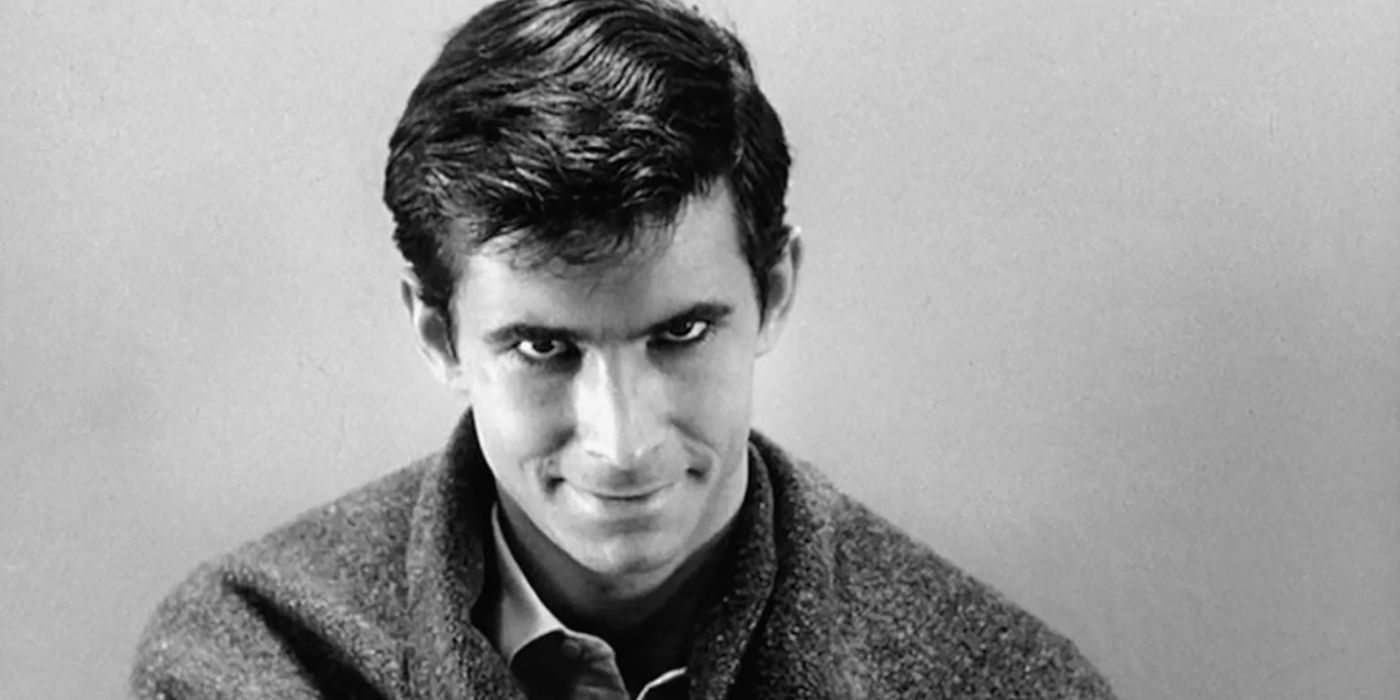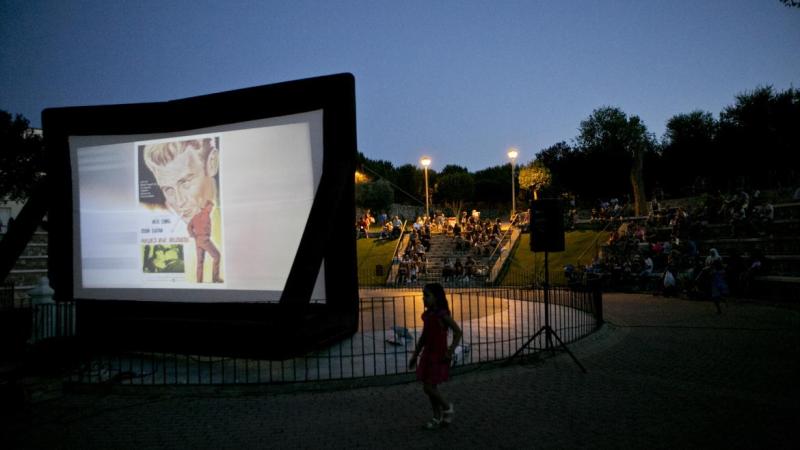‘Psycho’ Was Pulled From Television Because of a Real-Life Murder

The Big Picture
-
Psycho
broke new ground for horror and cinema, with Hitchcock’s unique vision shaping the slasher genre as we know it today. - Hitchcock’s marketing strategy for the film kept audiences in suspense, making
Psycho
a game-changing success. - A real-life tragedy caused CBS to delay the TV premiere of
Psycho
, resulting in it being aired the following year and heavily edited.
The development of the slasher movie subgenre was an important movement within the evolution of horror cinema and remains an immensely profitable concept to this day. While films specifically designed to scare and disturb their audiences have existed since the earliest days of cinema, the “slasher” villains of the Friday the 13th, Halloween, and A Nightmare on Elm Street franchises peaked in popularity in the 1980s. While the subgenre’s inception is often traced to films like Black Christmas, and The Texas Chainsaw Massacre, it was actually Alfred Hitchcock’s psychological thriller Psycho (along with a fellow 1960 horror, Peeping Tom) that had the most direct influence on slasher films as they exist today. While the film certainly attracted its fair share of detractors during its initial release, Psycho drew even more controversy during its television re-release due to associations with a real murder.
Psycho
A Phoenix secretary embezzles $40,000 from her employer’s client, goes on the run and checks into a remote motel run by a young man under the domination of his mother.
- Release Date
- June 22, 1960
- Cast
- Anthony Perkins , Vera Miles , John Gavin , Martin Balsam , John McIntire , Simon Oakland
- Runtime
- 109
- Main Genre
- Horror
- Writers
- Joseph Stefano , Robert Bloch
- Studio
- Paramount Pictures
- Tagline
- A new- and altogether different- screen excitement!!!
With ‘Psycho,’ Hitchcock Broke New Ground For Horror and Cinema in General
Hitchcock had already directed many beloved classics by the time he began working on Psycho, ensuring him a level of freedom that most Hollywood filmmakers were never allowed. A true “movie star director,” Hitchcock’s name was itself a reason to see a film and allowed him to get away with inserting challenging and subversive ideas into his narratives. While there was palpable suspense and intrigue within many of his best works, Psycho was the first overt horror film of Hitchcock’s career. While previous Hollywood films had to diminish their potentially lurid content due to the restrictions of the Hays Code, Hitchcock didn’t comply with these restraints and created a masterpiece of slasher cinema.
While the film itself still stands as one of the scariest of all time, Psycho became one of the most influential films of the 1960s in large part due to its brilliant marketing campaign. While trailers and the film’s poster (which featured Hitchcock looming larger than any of his actors) prominently highlighted Janet Leigh as the protagonist Marion Crane, audiences were taken by surprise when they realized what the character’s actual fate was. In one of the most famous moments in horror film history (and arguably all of cinema), Crane is attacked and murdered whilst taking a shower by the psychopath Norman Bates (Anthony Perkins). By breaking the standard narrative structure of a thriller, Hitchcock got under the audience’s skin and forced them to reconsider what they considered a “safe environment.”

Before ‘Bates Motel’ Was a Beloved Series, It Was an ’80s ‘Psycho’ Spin-Off Movie
It features an 18-year-old Jason Bateman in a supporting role!
Hitchcock’s strict control over the way Psycho was screened in movie theaters was also a major factor in its success. In order to ensure that the twist involving Crane’s early demise and the true identity of the killer did not leak, theaters had to maintain strict start times for screenings of the film so that no audience members could come in late. Additionally, audiences leaving the theater were encouraged to not discuss the film’s ending upon leaving the theater so that there would still be an aura of mystery for other potential viewers. While this level of secrecy would be impossible today given the plethora of spoilers on upcoming releases that are revealed on social media, Hitchcock’s strategy paid off, and turned Psycho into a game-changing moment for the horror genre.
A Real Tragedy Changed the ‘Psycho’ TV Release
Despite some of the backlash it received from viewers disturbed by its content, Psycho was a major hit upon its initial release, earning a level of acclaim that was relatively unheard of for the horror genre at the time. In addition to receiving four Academy Award nominations, including Best Director for Hitchcock and Best Supporting Actress for Leigh, Psycho would eventually rank within the American Film Institute’s list of the most thrilling movies of all time. Considering its immediately outsized impact on the medium, Paramount Pictures was keen to re-release Psycho on television several years after it had completed its theatrical run. Given the lack of home media availability for films at the time, releasing a major commercial hit on a broadcast network had the potential to yield significant advertising revenue and profit participation.
In a record-breaking deal, CBS acquired the rights to screen Psycho on their linear broadcast network for $800,000. Unfortunately, CBS had to shelve its initial plans to screen Psycho on television after a real murder was committed in 1966. Shortly before the film was scheduled to be broadcast, the young woman Valerie Percy was murdered in her family’s home in Chicago, Illinois. The victim’s father, Charles M. Percy, was in the midst of a campaign for the United States Senate, which attracted even more attention to the case. Given that Percy had been murdered in her home by an unknown assailant who had not been caught by the authorities, it was hard not to evoke comparisons to Psycho. CBS got cold feet and eventually announced that it would be “unsuitable” to screen in the Midwest area.
Why the ‘Psycho’ Shower Scene Was So Scary
In place of Psycho, CBS had already decided to screen the 1958 film Kings Go Forth, a war drama starring Frank Sinatra, Tony Curtis, and Natalie Wood. While the network initially planned to still screen the film in other territories, Psycho’s television premiere was postponed out of respect for Percy’s family. The story had been picked up by national journalistic outlets, and CBS grew concerned that the infamous “shower scene” could potentially offend or disturb its intended audience. When the film was eventually screened on the network in 1967, it had been significantly edited to remove as much graphic content as possible.
What’s most notable about the film’s one outstanding jump scare is that Psycho does not actually contain that much graphic content. Although it’s immensely disturbing, Marion’s murder is edited so sharply by Hitchcock that there is almost no actual nudity or violence included within the final cut. It speaks to Hitchcock’s brilliance as a filmmaker that he was able to deceive the audience into thinking that they saw something that they didn’t. While the film ended up inspiring a surprisingly interesting set of sequels, no entry in the franchise has managed to top the perfection Hitchcock achieved back in 1960.
Psycho is available to rent on Amazon.





